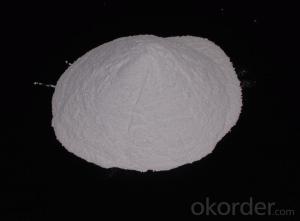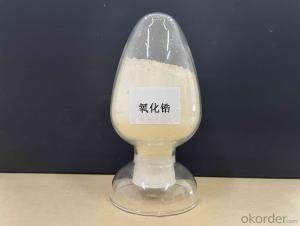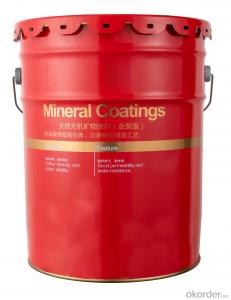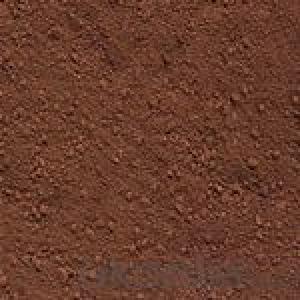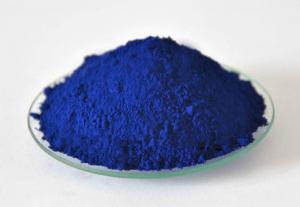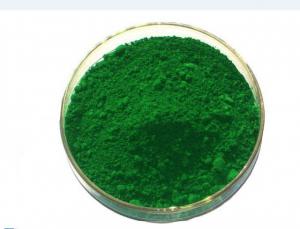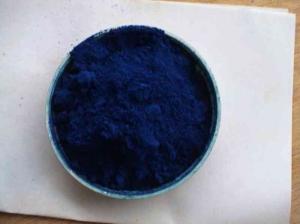Lithopone 28% 30% for paints, coating, plastic, rubber,masterbatch use
- Loading Port:
- Tianjin
- Payment Terms:
- TT OR LC
- Min Order Qty:
- 20 m.t.
- Supply Capability:
- 2000 m.t./month
OKorder Service Pledge
OKorder Financial Service
You Might Also Like
Specifications
white powder pigment Lithopone 28%-30% for paint &coating
1 Timely delivery
2 High quality with best price
3 ISO&SGS qualifed
White Powder Pigment Lithopone 28%-30% For Paint &Coating
Characteristics:
High whiteness lithopone is a kind of new-style nontoxic, green, non- pollution lithopone, adopt unique nano technology production, coated by Silicon & Aluminum with characteristic resistance to acid and alkali, higher weathetability, nice optical performance, high whiteness and temperature resistant, strong hiding power and reducing power to prevent from yellow.
White Powder Pigment Lithopone 28%-30% For Paint &Coating
Applications:
Widely used in all paint coating papermaking, printing, ink, medium and low-grade paint coating can be instead of the alternative of titanium dioxide pigment.
White Powder Pigment Lithopone 28%-30% For Paint &Coating
Specification:
Test Project | Standard index value |
Antholeucin & BaSO4 % (m/m) ≥ | 99 |
ZnO% (m/m) ≤ | 0.3 |
105°C Volatile% (m/m) ≤ | 0.3 |
Water soluble % (m/m) ≤ | 0.3 |
Sieve residue (63μm mesh)% (m / m) ≤ | 0.1 |
Color (compare with standard sample) | Excel |
Alkali of the water extract | Neutral |
Oil absorption (g/100g) ≤ | 10 |
Color power consumption (with standard sample)% ≥ | 105 |
Conceal ability (contrast ratio) | Not Lower than 5% standard |
White Powder Pigment Lithopone 28%-30% For Paint &Coating
Notes:
Careful load and unload, be care not pollute or torn the package, avoid rain and insolation during transportation.
White Powder Pigment Lithopone 28%-30% For Paint &Coating
Store:
Store in ventilated and dry places, pile less than 20 tiers, keep away from goods that can effect the quality of the goods, against damp.
White Powder Pigment Lithopone 28%-30% For Paint &Coating
Package:
PP woven bag, paper bag net 25 kg, 500 kg, 1000 kg etc, also can be negotiated with the client.
White Powder Pigment Lithopone 28%-30% For Paint &Coating
packing & shipping terms:
Trade
| MOQ | 1 Ton | |
| Price | ||
| Port | Xingang Port, China | |
| Payment | L/C,T/T | |
| Supply Ability | 4000 Tons/Month | |
| Payment Terms | Sample | 3-5 Working Days |
| Lithopone | Within 15 Working Days | |
| Packaging | 25 or 50kg/woven bag or kraft paper or upon request | |
| Shipping | By Sea,Air | |
White Powder Pigment Lithopone 28%-30% For Paint &Coating
why choose us:
1. We are factory.we can guarantee production
2. High quality product
3. Considerate service
4. Efficient work and best quality
5. Products can be custom-made
6. Professional marketing team

- Q:what are accessory pigments?
- Accessory pigments are light-absorbing compounds, found in photosynthetic organisms, that work in conjunction with chlorophyll a. They include other forms of this pigment, such as chlorophyll b in green algal and higher plant , while other algae may contain chlorophyll c or d. In addition, there are many non-chlorophyll accessory pigments, such as carotenoids or phycobiliproteins which also absorb light and transfer that light energy to photosystem chlorophyll. Some of these accessory pigments, particularly the carotenoids, also serve to absorb and dissipate excess light energy, or work as antioxidants. The different chlorophyll and non-chlorophyll pigments associated with the photosystems all have different absorption spectra, either because the spectra of the different chlorophyll pigments are modified by their local protein environment, or because the accessory pigments have intrinsic structural differences. The result is that, in vivo a composite absorption spectrum of all these pigments is broadened and flattened such that a wider range of visible and infrared radiation is absorbed by plants and algae. Most photosynthetic organisms do not absorb green light well, thus most remaining light under leaf canopies in forests or under water with abundant plankton is green, a spectral effect called the green window. Organisms such as some cyanobacteria and red algae contain accessory phycobiliproteins that absorb green light reaching these habitats. For more kindly click on the links below --- en.wikipedia.org/wiki/Accessory_p... en.wikipedia.org/wiki/Photosynthe...
- Q:i got some pigments off of ebay and i received two of them but they have a funny smell to them? are they supose to?
- *~...Welcome...It won't Be long Til U substitute into A MAC Addict. Hehe. nicely unfastened Eyeshadows Can Get Very Messy, So I recommend employing A Primer Or An Eyeshadow Base once you employ The Pigments. The Pigments Will final longer And the colour would be greater vivid. =) have faith Me, as quickly as you have tried MAC you will like it.... additionally, in case you like the Pigments, could i want to recommend splendor From the Earth...they have tremendous shade possibilities it incredibly is greater much less high priced.... get excitement from!
- Q:Please and thank you, it doesn't say so on the website.
- Mac Pigment Ingredients
- Q:What are leaf Pigments?
- Pigments that are present in the leaf that impart colour to the leaf are called leaf pigments. They are chemical compounds. Green colour in plants is due to Chlorophyll. Cholorophyll are also of different types Chlorophyll-A, Chlorophyll-B, Chlorophyll-C and Chlorophyll-D. Different colours are imparted to plants by different pigments. Some are Xanthophyll and Carotenoids.
- Q:Does anyone know its chemical formula or constituents ?
- Epona's answer is extremely sturdy. in case you seem up colour institutions you will locate diverse institutions reckoning on who has written them and what structures they're drawing from. yet you'll be able to desire to continually use institutions that make experience to you. case in point - you will in all probability locate that easy blue is the colour linked with peace. yet reckoning on what form of peace you're going for you may go with a diverse colour. possibly purple if that is for peace in the kin or with acquaintances, pink if that is religious in nature, or eco-friendly if that is physique appropriate. The institutions I genuinely tend to circulate with are: pink - lust, action, means, braveness Orange - creativity, braveness, means (extra innovative form than the pink). Yellow - issues bearing on the concepts (like possibly you have have been given a attempt to earnings for) or psychological suggestion. easy eco-friendly - prosperity darkish eco-friendly - therapeutic easy Blue - peace, tranquility darkish Blue - desires, on occasion suggestion pink - issues coping with the religious White - purification and can be a stand in for extremely just about something Black - liberating negativity, banishing purple - love, friendship, kin i do no longer think there is any colour that would desire to be prevented. yet I often use a diverse affiliation than what i've got listed. And my institutions are in user-friendly terms valid for yet somebody else in the event that they make experience to them. i exploit white candles maximum many times as I continually have them handy and that they might continually be spiced up with diverse oils this is something I do very often.
- Q:pigment: its color (to our eyes) what color of light it absorbsChl a Chl bCartenoidsany right answers would bbe greatly appreicated thanks soo muchhh
- pigment: .... reflected color to eyes .. what color of light it absorbs Chl a reflects green spectra between the blue and red absorption peaks. Some is absorbed at blue 450nm but most absorbed at red 680 - 700nm. Chl b reflects green spectra between the blue and red absorption peaks with a difference in which peak is stronger. Most is absorbed at blue 470 but also some at blue 430 and red 640 nm. Cartenoids reflect yellow, orange, or red and absorbs blue to blue-green light spectra. Xanthophyll absorbs well at 400-530 nm. Xanthophylls are a common sub class of the carotenoid pigment group. Beta-carotene absorbs most strongly between 400-500 nm.
- Q:Does anyone know of a way to change the color of your iris' permanently?I've been researching for a while, and have not been able to find anything! I already know about newcoloriris (surgery), but that had loads of side effects. I already know about contacts (ive had them on and off for a while).I don't see how with all the science and technology in the world, there's no way to simply lighten your eye color. We can literally dye our skin, we can tattoo our eyeballs, we can do almost ANYTHING in the world today. So, how has nobody discovered a way to change eye color.?I'm aware that blue/light eyes are a result of low melanin production, But i don't understand how there's no known way to reduce the overproduction of melanin in darker/brown eyed people.It's really frustrating. If anyone knows any websites, doctors, or scientists currently working on a way to do this, please let me know! Or if you know of a new way someone has come up with, please let me know!lt;3 THANKSSSS
- Many people strive to attain lighter, brighter, healthier-looking skin. Learning to properly care for your skin on a day-to-day basis will help your skin stay light and tight, while more substantial and scientifically-proven lightening products are also widely available. In my opinion this is the best method https://tr.im/71GGy
- Q:i love makeup so mucch im like addicted...lol but the only thing is that i only buy that department or drug store brands cause i cannot afford high quality brands. the one that i buy are good for me,,but anyways i was wondering what the heck is mac eyepigment,,what is the diffrence between eyeshow and pigment? pleas help thank u,,,oh yeah and what does it look,like on the eyes?
- Mac pigments are great to use if you love makeup like myself. I use this one called frost and it's great for mixing your eyeshadows, as a highlighter, and even mix it with your lipstick or lip glosses. This other one i have is pot of gold or something like that , but i mainly use it on my eyes and maybe a lil with my lip gloss. It's has a shimmer look to it, so a little goes a long way, but it's pretty much versitile. I also use pigment by loreal and i like the colors it does work , but not as good as Mac, but the you need to spend some money on good makeup brushes , that way you it will go on evenly and won't make you look like a racoon. Hope this helps
- Q:what is one reason why plants have accessory pigment molecules like chlorophyll b and carotenoids?
- Pigments in plant biology are actually (as you may know) long-chain conjugated systems which absorb light at specific frequencies. This specificity is largely due to the morphological and physical features of each pigment molecule. Since Chlorophyll a only absorbs well at wavelengths of about 400-450 nm and 650-700 nm a plant empowered with only this photosynthetic molecule would have an extremely limited range of spectral absorption. This is where the accessory pigments come in. Chlorophyll b's absorption peaks at 450-500 nm and 600-650 nm and Xanthophyll's at around 400-530 nm, allowing for a much wider absorption range. Carotenes contribute to photosynthesis by transmitting the light energy they absorb from chlorophyll back into the energetic system. None of the pigments, absorb well in the green-yellow region which is largely responsible for the abundance of greens we see throughout nature. The five main pigments are: Chlorophyll a - a blue-green pigment Chlorophyll b - a yellow-green pigment Carotene - an orange pigment Xanthophyll - a yellow pigment Phaeophytin a - a gray-brown pigment Phaeophytin b - a yellow-brown pigment A good illustration of this concept can be found in this graph of Photosynthetically Active Radiation, illustrating the absorption peaks of all the molecules: upload.wikimedia.org/wikipedia/co...
- Q:How can you extract pure pigments from a sample of leaves in a form that you could test the absorbency of the various pigments??I don't know how to extract enough pigment in order to fill a cuvette and measure the absorbance, please help!! :D
- Separation of plant pigments using chromatography. Paper chromatography is a useful technique in the separation and identification of different plant pigments. In this technique, the mixture containing the pigments to be separated is first applied as a spot or a line to the paper about 1.5 cm from the bottom edge of the paper. The paper is then placed in a container with the tip of the paper touching the solvent. Solvent is absorbed by the chromatographic paper and moved up the paper by capillary action. As the solvent crosses the area containing plant pigment extract, the pigments dissolve in and move with the solvent. The solvent carries the dissolved pigments as it moves up the paper. The pigments are carried along at different rates because they are not equally soluble. Therefore, the less soluble pigments will move slower up the paper than the more soluble pigments. This is known as developing a chromatogram.
1. Manufacturer Overview |
|
|---|---|
| Location | |
| Year Established | |
| Annual Output Value | |
| Main Markets | |
| Company Certifications | |
2. Manufacturer Certificates |
|
|---|---|
| a) Certification Name | |
| Range | |
| Reference | |
| Validity Period | |
3. Manufacturer Capability |
|
|---|---|
| a)Trade Capacity | |
| Nearest Port | |
| Export Percentage | |
| No.of Employees in Trade Department | |
| Language Spoken: | |
| b)Factory Information | |
| Factory Size: | |
| No. of Production Lines | |
| Contract Manufacturing | |
| Product Price Range | |
Send your message to us
Lithopone 28% 30% for paints, coating, plastic, rubber,masterbatch use
- Loading Port:
- Tianjin
- Payment Terms:
- TT OR LC
- Min Order Qty:
- 20 m.t.
- Supply Capability:
- 2000 m.t./month
OKorder Service Pledge
OKorder Financial Service
Similar products
New products
Hot products
Related keywords
